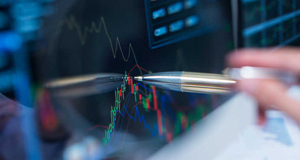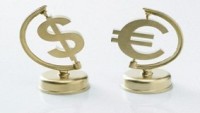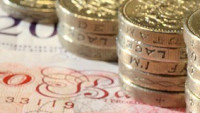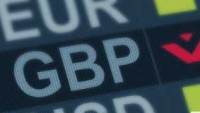 European and US markets went on a tear yesterday, with markets in Europe seeing their biggest one-day gain since March 2020, with the DAX standing out, while US markets also rose at their fastest rate since November of the same year.
European and US markets went on a tear yesterday, with markets in Europe seeing their biggest one-day gain since March 2020, with the DAX standing out, while US markets also rose at their fastest rate since November of the same year.
Oil prices also dropped sharply after an aide to Ukraine President Zelenskiy said the country is open to Russia’s demand of neutrality just as long as its gets cast iron security guarantees.
This still seems like a huge leap of faith on the part of markets, particularly where Russia is concerned where there is scant evidence that they can be trusted on anything, after yesterday’s horrific bombing of a hospital in Mariupol, and the indiscriminate bombing of civilian targets.
Nonetheless the pressure on the Russian economy continues to ramp up as more global brands suspend their operations in the country, with Coca-Cola the latest to pull out.
As we look ahead to today’s European open, which looks set to be a slightly softer one, after yesterday’s rebound, the focus will still be on events in Ukraine, but markets will also be eyeing today’s ECB rate decision, as well as US February CPI.
If the ECB’s position wasn’t difficult enough already, recent events in Ukraine will mean that inflation, far from being transitory is not only likely to remain high but is also set to go even higher over the course of the next few months.
CPI is already well over 10% in the Baltic states, and closer to the front line, but likely to go even higher in the coming months.
This, with European headline rates already deeply negative, and no real scope to cut them further, make it even more difficult for the ECB, at a time when inflation is likely to surge higher and GDP growth to slow further.
ECB President Christine Lagarde has already stepped back from repeating her claim back in December that a rate hike was unlikely this year at the last meeting, but she is now faced with having to balance a slowdown in GDP, a surge in inflation, as well as the prospect that we could see fiscal stimulus from EU leaders as the EU tries to navigate away from Russian energy.
Since the last meeting, events have moved on geopolitically and not in a good way.
PPI prices, which tend to be leading indicators for CPI are already at record highs across the bloc. In Germany, PPI is already at 25%, and is much higher in Spain and Italy.
With the PEPP program ending this month it seems more than likely that they will need to look at extending and increasing the APP program to compensate. This is currently running at €20bn a month.
In a sign that some of the hawks are shifting their positions on the prospect of a rate rise this year given recent events, we had Austrian ECB Governing Council member Robert Holzmann rowing back slightly on his earlier call for a rate hike towards the end of the summer due to events in Ukraine.
With oil prices ripping as high as $130 a barrel this week, and grain prices also surging, with no sign of a de-escalation of tensions between the West and Russia over sanctions, it seems things are likely to get an awful lot worse in the short term, with the prospect that EU inflation could well go much higher than the current level of 5.8%. Lagarde will find it much more difficult to peddle the transitory narrative this time around and if she continues to peddle that line the ECB is likely to lose whatever vestige of credibility it still has.
Even without events in eastern Europe, a rate hike would have presented enormous challenges for the ECB. Current events make that prospect look even less likely now.
The inflation theme is set to remain front and centre this afternoon, with the latest US CPI numbers for February due to see another 40-year high.
In January headline CPI jumped to 7.5%, a few weeks ago up from 7% in December, with core prices tipping the scales at 6%, as markets started to assign a much higher probability that the Federal Reserve might raise rates by 50bps when they are due to meet next week.
As with the ECB events have moved on quite a bit since then, with geopolitics impinging on events, and making the Federal Reserve’s job even harder. Aside from used car and petrol prices, which saw an increase of 40% year to date in January, double digit price rises are being seen in domestic gas, as well as meat, dairy, fish, and fruit, and that’s even before the increases in prices seen in the past few weeks.
With PPI also showing little sign of slowing down in January today’s February CPI is expected to see a further increase to 7.8%, or possibly higher at 8%, and go some way to sealing the deal on a 25bps rate hike next week.
The wider question will be around how many more will follow, and that remains the key question as asset purchases came to an end this week. There has been little sign that expectations of the number of rate rises this year has been pared back, given the resilience in the US economy, but it seems highly unlikely that we’ll need to see anywhere near the number of rate hikes expected right now given the strength of the US dollar.
Weekly jobless claims are expected to come in at 217k, broadly unchanged from last week.
EUR/USD – rallied back through the 1.1000 area and now opens the prospect of a move towards the 1.1200 area, while above 1.0980. A fall back below 1.0980 could see a return to the lows at 1.0800.
GBP/USD – finding support at the 1.3080 area but needs to push back through the 1.3180 level to signal further gains towards 1.3450. Below 1.3080 argues to a move towards 1.2800.
EUR/GBP – has squeezed all the way back to the 0.8420 area. This needs to hold or risk a move towards 0.8480. While below 0.8420, there is a risk of a fall back to the 0.8370 and 0.8320 area.
USD/JPY – continues to edge higher with next resistance at the 116.30 area. We have support now at the 115.30 area, as well as the 114.40/50 region.













